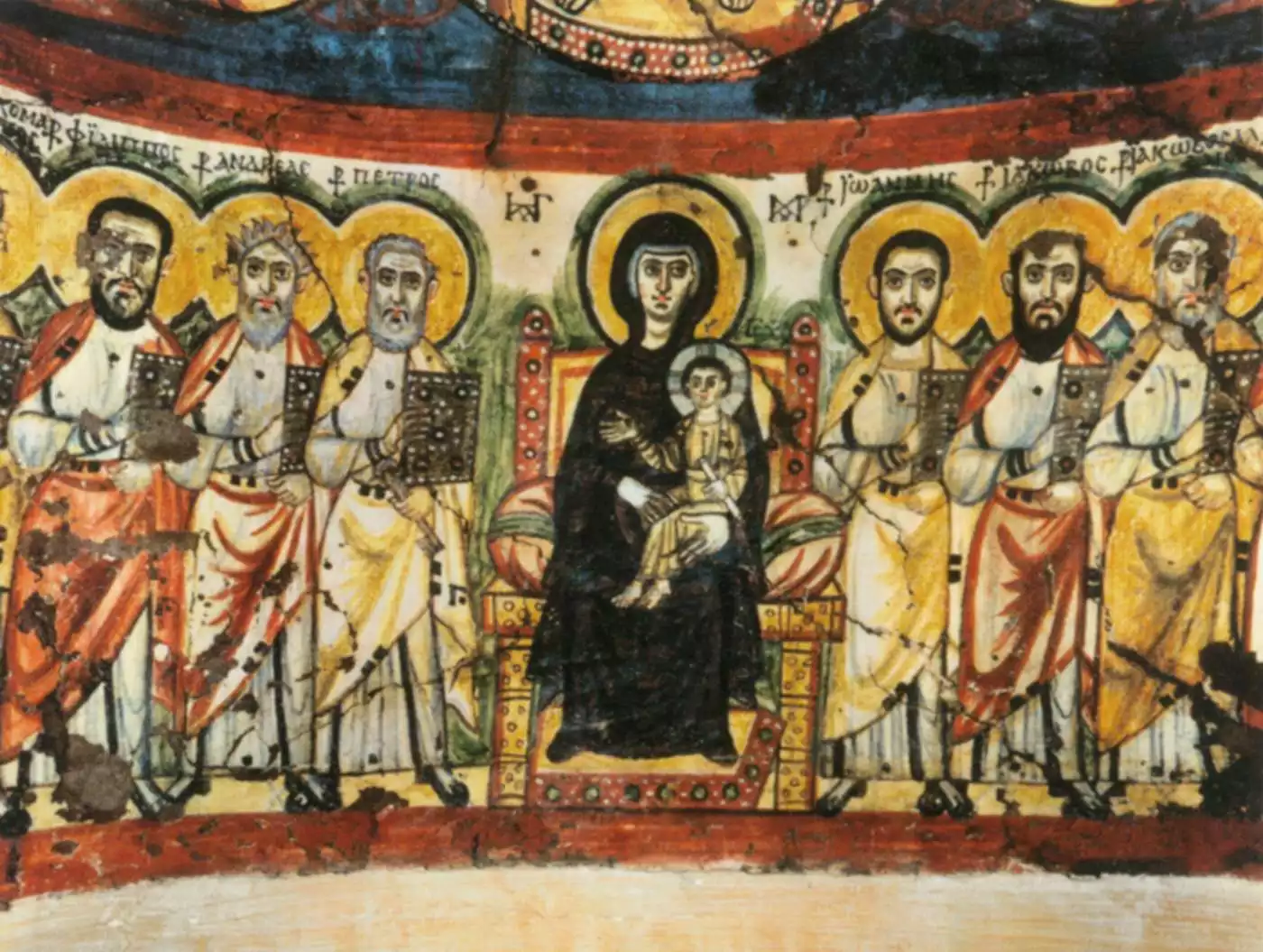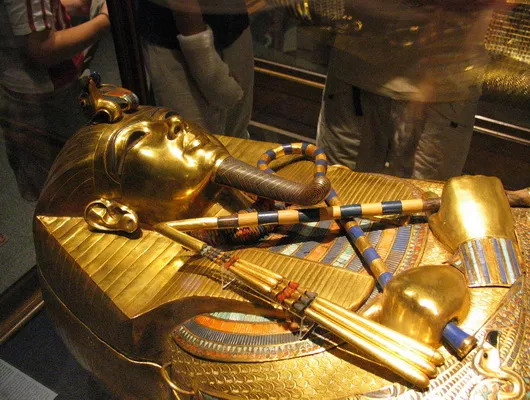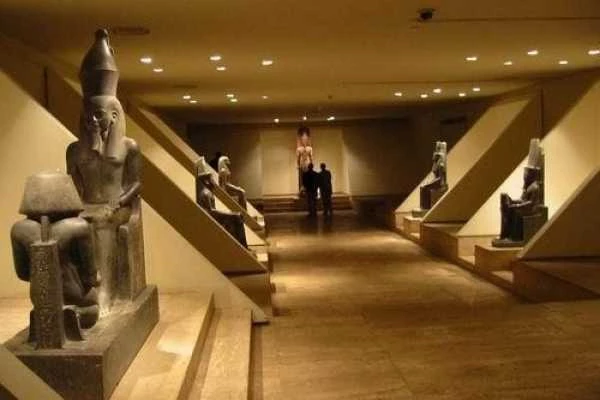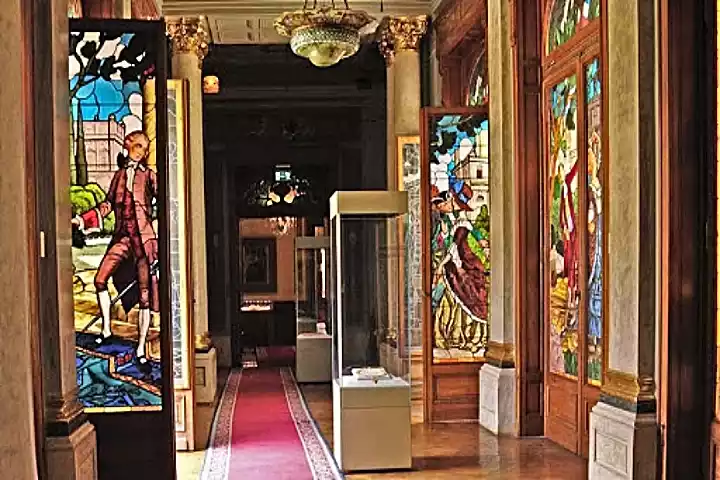The Coptic Museum
The Coptic Museum in Cairo is located inside the ruins of the Roman Fort of Babylon. The Museum is in the Maser El Qadema neighborhood in central Cairo, an area that is full of Coptic Churches and chapels, such as the famous hanging Church and the Church of St Barbara.
Nobody would ever believe that the foundation of the Coptic Museum goes back to the era of the Persians, and many items were added afterward by the Roman emperors August and Trajan. The famous French scientist Maspero also played a significant role in establishing the modern Museum as he spent a long time collecting Coptic monuments from all around Egypt and preserving them.
The founder of the Museum in modern times is Smeka Pasha, who requested that the items in the Museum be added to the Egyptian Committee for Preserving Antiquities and Art. Pasha exerted considerable efforts to start the building of the present Museum, and it was opened to the public in 1901 with Pasha designated as its first director.
The Coptic Museum today consists mainly of two major sections: the old section established by Pasha and the new section that consists of two floors opened for the public in 2006 after a considerable renovation and restoration period. The repair cost reached more than 30 million pounds because the Museum was poorly affected by the earthquake that struck Egypt in 1992.
The Museum now displays around 1600 items collected from various regions around Egypt and goes back to a different century in the Coptic history of Egypt. The Coptic Museum is considered the best place to learn about Coptic history in Egypt. The first section of the old Museum, the visitor, goes to is the Ahnasya section. Alnasya is a town near Beni Sweif south of Cairo, and some Coptic items were discovered in the area that goes back to the third and fourth centuries A.D. The second section is the Saqqara section, where the Monastery of St. Armenia ruins are located with many rock structures and other items gathered from monasteries from Fayoum and areas of Upper Egypt. The new two stories of the Museum consist of eight sections as follows.
The Stone And Portraits Section
The stone collection contains a lot of tempura-style stone drawings. The second part of this section includes a vast collection of beautifully decorated stone capitals collected from monasteries and churches all over Egypt. The Copts brought these stone capitals from different regions around Egypt, and they were then reused to build Coptic structures.

There are also a lot of portraits that were gathered from ancient monasteries.
A portrait of Christ with his face inside a circle of light carried by angels was also found in the monastery of Apollo.
The cross is found on the walls of the Jeremiah Monastery.
The Section Also Includes
1. A patriarchal throne made of bronze and copper from the 10th Century
2. A portrait of a young man enclosed in a double medallion
3. A collection of stone capitals from the monastery of Saint Jeremias
4. A ceiling portrait of Adam and Eve in the Tempra style found in Fayoum in the 11th Century
The Metal Section
This section contains a large amount of silver and gold Coptic coins. Most of these coins were brought from the White Monastery in Sohag. There are also a lot of drawings that were carved on silver and other precious metals, such as:
![]()
1- A silver icon of the Virgin Mary holding Jesus.
2- A patriarchal throne made of Bronze and copper from the 10th Century
Other Items
1. A Bronze dish with Coptic inscriptions from the 10th Century
2. An Ethiopian censer with a perforated base and dome made of bronze 18-century
3. Crosses from the Byzantine period
4. Different keys from the 13th Century
5. A Cross made of Bronze
The Wood Section
The lack of good wood was always the most significant obstacle that faced wooden crafting in Egypt. However, the Egyptians imported wood since the days of the Pharos, and the Copt artists used different kinds of woods like tamarisk, acacia, sycamore, and lebbakh to produce their art.
The Museum Has Many Wooden Items
1. A wooden box with ivory or bone inlays originally intended to store clerical vestments dated to the 17th to 19th Century.
2. Marcus Church in Rosetta brought a wooden door with many different decorations.
3. A wooden art piece showing people playing music from the 5th to 6th Century.
4. A door decorated with geometric designs and bone inlays from the Mamluk period.
5. A wooden chair from the 18th Century with Arabic inscriptions.
6. A broken pediment of the two nude erodes and the cross from the 4th Century.
The Ivory Section
During the Greek period of Egyptian history, Alexandria was a central trade point of ivory in the whole world. However, by the time of the Roman rule in Egypt, Persia became the most important focal point for the ivory trade.
The Coptic Writings Section
This is one of the most exciting sections of the Coptic Museum as it contains bibles written in the 11th and the 13th Century on deerskin in the Coptic and Arabic languages. There is also an exciting wooden sickle cell that holds the Bible and goes back to the 14th and 15th Centuries.
1. A manuscript by St. Mark, St. Mathew, and St. John from the 11th Century
2. Lectionary of the Gospels according to the Greek rite with titles and simple colors decorations from the 13th Century.
3. A papyrus paper with Christian writings 6-8 century
4. The book of the Psalms still has its wooden cover found in Beni Sweif in the 4th or 5th Century.
5. The four Ashiers are written in gold Arabic script.
The Pottery And Glass Section
The Copts, just like any other culture in Egyptian history, took advantage of the excellent quality of the pottery and glass in Egypt to produce their art. The museum has a lot of pottery items that go back to the 6th Century A.D., like:
1. A flask of St. Minas standing between two 6th or 7th Century camels.
2. A jar decorated with birds and saints in different postures wearing varied clothes.
3. A painted bowel with a flat scalloped rim of alluvial clay with some human decorations from the 8th Century.
4. A storage jar painted in columns representing the bust of human figures, animals, and birds and floral designs inside vaults from the 7th Century.
The Cloth And Textil Section
This section includes many monks' clothes decorated with crosses, drawings of the Virgin, and drawings of Christ.
1. A fragment is woven with woolen thread in a tapestry representing a cross decorated with stylized human figures.
2. A Kettan robe with ornaments in two columns. One is horizontal, and the other is diagonal. It is from the 5th or 6th Century.
3. A part of a Coptic tapestry with two parallel columns of decorations from the 4th or 5th Century.
4. A cloth showing the Virgin and Jesus from the 7th Century.
5. A textile of a cross found in Kellia.
6. Christian decorations from Michael monastery in Maser el Qadeema from the 17th Century.
7. Fragment of a curtain or a tunic with tapestry decorations from the 6th or 7th Century.
Icon Section
The most remarkable and exciting section of the museum is the icon section. It contains a vast collection of Coptic icons from different eras with different themes and decorations. One of the styles of these icons is called Frisk, which the Coptic artists were affected by the drawings of the walls of the Pharaonic temples, and they started drawing on the walls of Churches and monasteries. However, because of the persecution of the Romans against the Copts, they started drawing on wood and plaster, which could be carried easily while escaping an attack on a church or a monastery. The word "Icon" is a Greek word that means a picture, and it may contain a drawing of saints or other religious scenes.
1. Icon of St. Andrews the Apostle holding the Holy Bible and a cross 17th to 18th Century.
2. Icon of the crowned Virgin holding the Infant Jesus They are between two Saints having halos around their heads. Two angles carry the Virgin's crown, and the Holy Spirit is descending from heaven as a dove.
3. Icon representing St. Nicolas from the 19th Century.
4. Icon representing St. Menas on horseback, holding the bridle with his left hand and piercing a dragon with a long spear with a cross fixed at the top. A halo surrounds his crowned head.

5. Icon representing St. Victor, the martyr wearing a crown and riding on horseback. He holds a cross with his right hand and the bridle with his left. Under the horse is a dragon representing the devil.
6. Icon representing the Virgin and the Infant holding a golden roll in His hand from the 18th Century.
7. Icon representing two persons: Ahrakas and Oghani. They wear masks shaped like dog heads. They look right towards a fruit tree.
8. This famous icon represents the visit of Saint Antony (on the left) to Saint Paul (3rd - 4th century), who lived in retreat in the eastern desert near the Red Sea.

The last and maybe most fascinating item in the museum is the haulage" or a cart" made out of Abanos wood inlaid with ivory and mother of pearl that was used to transfer rich ladies to Jerusalem during the Roman period.
Hours of Operation
Open daily from 9 am to 9 pm
Ticket Cost
Egyptian: LE 10 (LE 5, students)
Foreign: LE 80 (LE 40, students)
Student rates are available to bearers of a valid student ID from an Egyptian university or an International Student ID Card (ISIC)
Facilities
Cafeteria (coming soon), gift shop, school, luggage office, library (not open to the public). Guides are not provided. A catalog of the museum collection is available for purchase at the bookstore. The museum is wheelchair-accessible.
Contact Info
Phone: (02) 2362-8766/ (02) 2363-9742
MUSEUM WEBSITE:
http://www.copticmuseum.gov.eg/


















